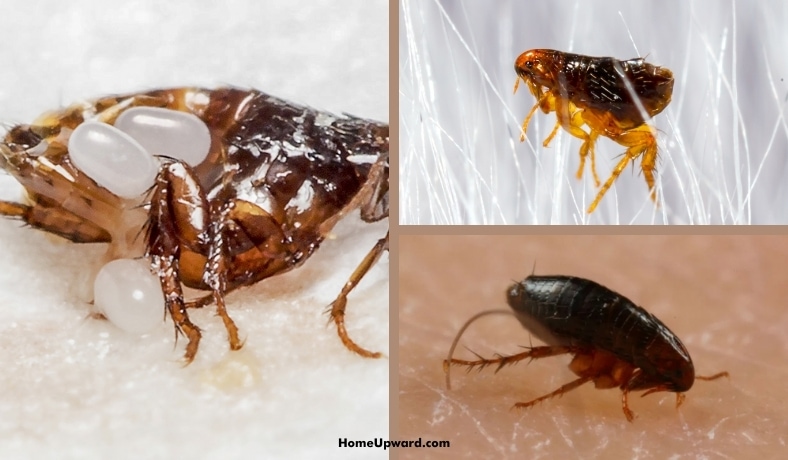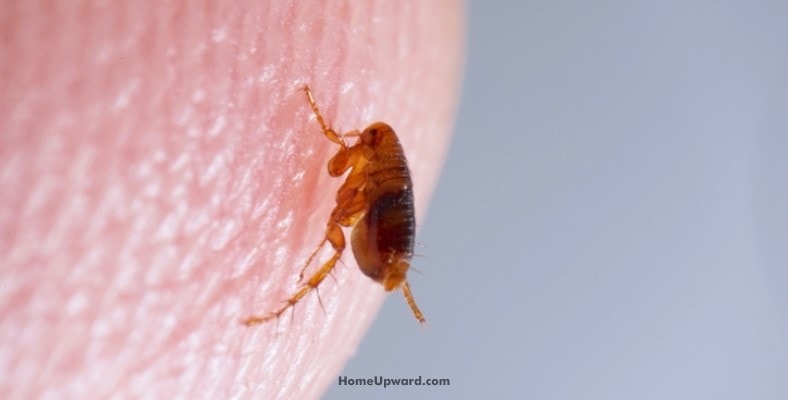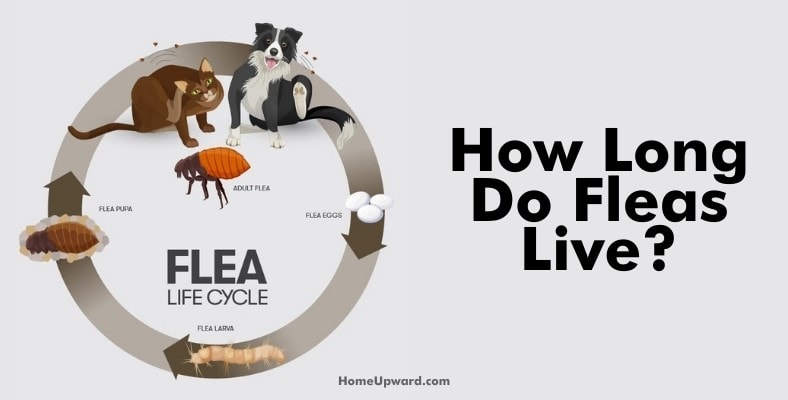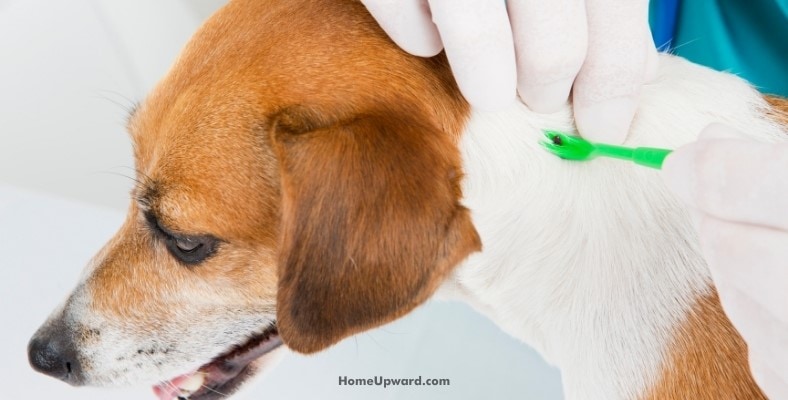If you think you’ve got a flea problem you may be wondering how to identify them. This includes trying to figure out what they even look like.
In this article, I’ll share lots of helpful information about fleas, what they look like, flea bites and how to kill them.
Contents
What Color are Fleas and What Do They Look Like?
If you think you may have an infestation or are getting bitten, you’ll definitely need to know what fleas look like. Fleas usually find their hosts in mammals – most commonly cats and dogs but are well known to bite humans or other pets and can transmit diseases, too!
There are a few different types of fleas, including cat fleas, dog fleas, and even human fleas but they’re all fairly close to each other in appearance.
Flea colors and other things to know
Fleas are typically brownish-black in color. Since they feed on blood their color may sometimes change to a reddish-brown after eating. They’re so tiny it can be difficult to tell what their real color is but in many cases they look black when you see them.
Fleas have a sort-of oval shaped body and are wingless insects with powerful back legs that help them jump long distances. Their bodies are also flat, which is a feature that helps them climb through hair and also makes it harder to catch them by hand.
How Big are Fleas?
Fleas are about 1/8th of an inch long (about 1 to 3mm). They are incredibly tiny but still visible to the naked human eye.
To give you an idea of how small a flea is, 1mm is roughly the size of the very tip of a number 2 pencil!
This is why it is so important to be vigilant about fleas. Their small size makes it difficult to see just one or two, so by the time you notice them on your pet, you likely already have a problem.
How Long Do Fleas Live?
The life cycle of a flea isn’t very long, actually. There are a few stages a flea must go through before it becomes an adult:
- It starts as an egg
- Hatches into a larva
- Spins a cocoon (pupal stage) to become an adult.
The timeline of this process varies depending on the time of year. During the summer, the process of becoming a pupa is short, anywhere from four to twenty-four days. In cooler conditions it can take 200 days. It can take a week or two for the flea to emerge as an adult.
Once a flea is fully grown it can live up to a year in suitable conditions. Without a host animal, however, most fleas can only survive up to two weeks.
In general, though, the average lifespan of a flea is only up to about 100 days.
Where Do Fleas Come From?
If you have a flea infestation, you may wonder how it started and where the fleas came from. There are several ways that fleas can travel into your home.
- Another animal: Fleas will hop from host to host. Remember those powerful legs? They jump from one infested animal to another, so if your pet spends time outdoors, it may come into contact with a flea-infested stray or wild animal. The tiny insects will hop on and hitch a ride straight into your home.
- Another home: It is not common, but if there are no suitable animal hosts, a flea will migrate onto a human. It is always possible that you carried fleas into your home on your body from another infested home or outside.
- Outside: Since fleas lay eggs on their hosts, these eggs will drop to the ground. This means that fleas often hatch outside. They are usually found in shady spots, near tall grass, or near bushes. They simply wait for a suitable host to wander by.
Where Do Fleas Bite Humans?
We told you that flea eggs usually drop to the ground outside. This is also true in your home. This means that if your pets have fleas, anywhere they travel inside your home is at risk of containing flea eggs or larvae. Once they pupate and become adults, they simply wait for a host to walk past them.
While fleas prefer furry mammals like cats and dogs, they will settle for humans.
Because they hop from the ground onto the host fleas usually bite our ankles. Since this body part is low to the ground, and it is not as easy for fleas to travel up our bodies due to the lack of fur, our ankles take the hit!
How Often Do Fleas Bite?
Fleas do not typically live on humans. We lack the hair that they prefer to live in, which offers them protection to reproduce safely. However, with the lack of a preferred host nearby, a flea will feed on a human.
Fleas are nocturnal insects, meaning bites usually occur at night, but they will still bite you at any time of day.
A single flea can bite up to 400 times a day, sometimes even feeding three times back-to-back.
What Do Flea Bites Look Like?
Flea bites are usually on the feet and ankles. They may not leave a mark unless you are very sensitive to them. However, if you are bitten repeatedly, you are more likely to see the bites on your skin.
Flea bites look similar to small mosquito bites. They are round bumps that are red and raised slightly. You may see a “halo” or ring around the bite.
Flea bites are very itchy and can cause several complications such as allergic reactions, rashes, or even flea-borne diseases. Yes, that includes the plague!
What Kills Fleas?
Luckily, there are several ways to get rid of fleas:
- Home remedies (dish soap, herbal products, rosemary, diatomaceous earth, and many more)
- Vacuuming frequently: this will get rid of eggs and larvae in your carpet, preventing more adults from migrating to you and your pets
- Cleanliness: keeping your home clean and sanitized will help minimize the risk of fleas
- Flea collars: Over-the-counter and prescription flea collars are available for cats and dogs to kill adult fleas
- Medicine: Flea medicine comes in a few forms. There are over-the-counter and prescription-only formulas available for your pets. The most common form is topical flea medicine applied to the animal, but pills are also available.
- Poison: Using either store-bought or pest control-provided products, you can spray your home for fleas.
- Traps: Traps can be used indoors to capture them as they move about on your floor or carpet. Sticky traps are a good example of this: they’re attract to the warmth of a small like and get permanently caught in the adhesive strip, unable to escape.






